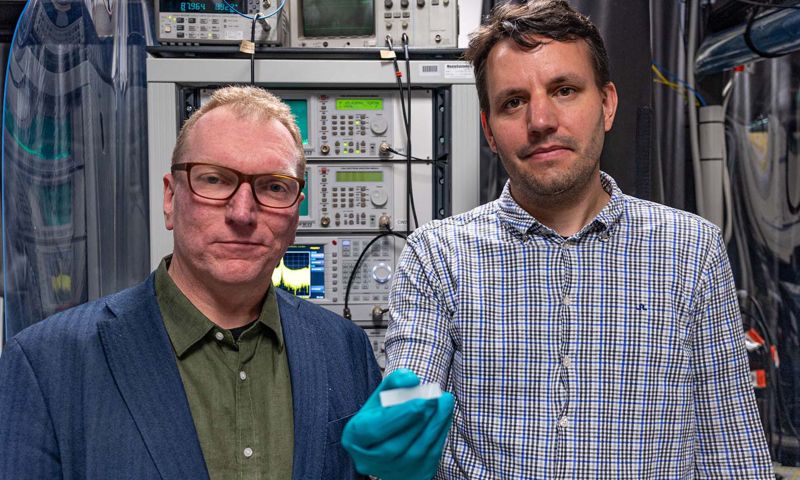What is lithium niobate and how can it be used?
Lithium niobate is an artificial crystal that was first discovered in 1949 but is “back in vogue”, according to Boes.
“Lithium niobate has new uses in the field of photonics – the science and technology of light – because unlike other materials it can generate and manipulate electro-magnetic waves across the full spectrum of light, from microwave to UV frequencies,” he said.
“Silicon was the material of choice for electronic circuits, but its limitations have become increasingly apparent in photonics.
“Lithium niobate has come back into vogue because of its superior capabilities, and advances in manufacturing mean that it is now readily available as thin films on semiconductor wafers.”
A layer of lithium niobate about 1,000 times thinner than a human hair is placed on a semiconductor wafer, Boes said.
“Photonic circuits are printed into the lithium niobate layer, which are tailored according to the chip’s intended use. A fingernail-sized chip may contain hundreds of different circuits,” he said.
How does the lunar navigation tech work?
The team is working with the Australian company Advanced Navigation to create optical gyroscopes, where laser light is launched in both clockwise and anticlockwise directions in a coil of fibre, Mitchell said.
“As the coil is moved the fibre is slightly shorter in one direction than the other, according to Albert Einstein’s theory of relativity,” he said.
“Our photonic chips are sensitive enough to measure this tiny difference and use it to determine how the coil is moving. If you can keep track of your movements, then you know where you are relative to where you started. This is called inertial navigation.”
Potential applications closer to home
This technology can also be used to remotely detect the ripeness of fruit.
“Gas emitted by ripe fruit is absorbed by light in the mid-infrared part of the spectrum,” Mitchell said.
“A drone hovering in an orchard would transmit light to another which would sense the degree to which the light is absorbed and when fruit is ready for harvesting.
“Our microchip technology is much smaller, cheaper and more accurate than current technology and can be used with very small drones that won’t damage fruit trees.”
Next steps
Australia could become a global hub for manufacturing integrated photonic chips from lithium niobate that would have a major impact on applications in technology that use every part of the spectrum of light, Mitchell said.
“We have the technology to manufacture these chips in Australia and we have the industries that will use them,” he said.
“Photonic chips can now transform industries well beyond optical fibre communications.”
“Lithium niobate photonics: Unlocking the electromagnetic spectrum” is published in Science (DOI: 10.1126/science.abj4396).
RMIT University and the University of Adelaide led this research in collaboration with Peking University, Stanford University, Harvard University, University of Southern California, Hyperlight, University of Rochester and University of California.
Co-authors are Andy Boes, Lin Chang, Carsten Langrock, Mengjie Yu, Mian Zhang, Qiang Lin, Marko Lončar, Martin Fejer, John Bowers and Arnan Mitchell.
Story: Will Wright






